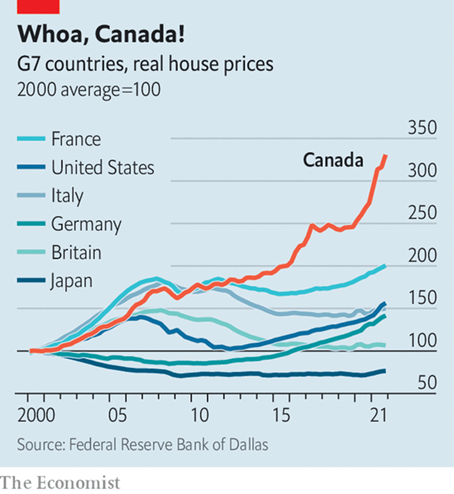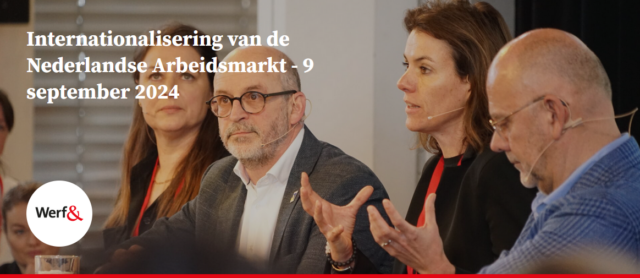
From Baby Boom to Migration Boom. Canada is known for its very friendly approach to migrants. With the ageing of the baby boomer generation in mind, the Canadian government is implementing a particularly open migration policy. Between 2024 and 2026, the Canadian government aims to admit approximately 1.5 million people, which is about 4% of the current population. In the next 10 years, it would amount to as many as 5 million immigrants in a country with a current population of about 39 million. In other words, 1 in 9 Canadians in 2034 do not live in Canada.
1 in 9 Canadians in 2034 do not currently live in Canada.
To compare this with the Netherlands, imagine having a government that states that we should admit another 2 million migrants in the next 10 years, reaching a population size not expected until 2060, according to current projections. Meanwhile, the ageing population in Canada is slightly less severe than in the Netherlands.
More Housing Needed
Migration alone in Canada necessitates at least 1.0 to 1.5% more housing per year. This is in addition to the demand from native Canadians due to factors like divorces and children leaving home. Consequently, the demand for housing is about twice as high as the supply, which increases by only about 0.5 to 1.0% annually. However, building additional houses was insufficiently or not at all included in the Canadian government’s migration plans.
Attracting foreign talent, especially in an attractive country like Canada, is a much smaller problem than realizing housing.
Attracting foreign talent, especially in an attractive country like Canada, is a much smaller problem than realizing housing. And since housing is not a requirement for labour migrants (note: this does not concern refugees), they are sometimes even accommodated in sports halls. This, combined with the most expensive housing market in the G7 countries (since 2000, house prices have become almost 2.5 times more expensive), puts pressure on the Canadian government’s plans.
Numbers but Not the Right Skills
Canada is a highly desired destination country. Thus, the problem is not the number of migrants but migrants with the right skills, competencies, and qualities. And what happens now that Canada’s borders are wide open? Neither the government nor the business community clearly understands who they need. Both have also not coordinated this well. Therefore, while quantity is achieved, quality is not. This impacts unemployment (which has risen to well above 6%), and salary development (which is under pressure for starters, young people, and generic roles).
The entire Canadian social system is actually under pressure due to migration.
In short, the people coming to Canada are not necessarily the nurses and mechanics needed. This does not relieve the labour market but rather burdens it further, quickly eroding support for the uncontrolled degree to which the borders have been opened. The housing market is suffering, and healthcare, education, and social services (everything within the public domain) are under pressure from the current migration boom. The entire social system of Canada, in other words.
Cultural and Language Barriers
This extra pressure arises from above-average demand by newcomers and cultural and language barriers that need to be overcome. This is also part of the problem: there is insufficient insight and coordination on (when) what skills and qualities are needed, and there is also a lack of data and information about the people entering. Only this year is the government starting to measure and register the numbers and skills of incoming migrants.
However, Canada has not abandoned its ambition to admit nearly half a million people annually. The country has taken various measures to gain better control over the process. These include:
- Closing simple loopholes in the system;
- All applications will now be processed online to gain more control over the influx. This process now takes longer (up to 3 months), causing discouragement. Previously, this sometimes happened in writing – with a stamp in a few minutes;
- The quota has been set on the influx of specific skills/professions;
- Students are allowed to work fewer hours (from 40 to 20 per week, or even less);
- Rejecting applications for procedural errors. If a form is filled out incorrectly, you are rejected and thereby discouraged;
- Instead of focusing on acceptance, the focus is now on rejection;
- Only issuing visas on the personal title of migrants to combat human trafficking.
Many Parallels with Brainport
Regarding migration – whether knowledge workers, international students, or labour migrants – the lack of housing seems to be the biggest problem in the Netherlands. Especially for permanent immigrants, the social disruption associated with it may be an even more significant challenge. From healthcare to education, the broad public system is poorly equipped. In particular, regions like (Greater) Eindhoven and Amsterdam face challenges similar to those faced by Canada. How will Dutch twenty- and thirty-somethings ever be able to afford a house here?
The labor market no longer works in such a way that when someone retires, that gap needs to be filled.
Ageing is often used to explain why more people are needed in an economy. However, the labour market no longer works, so when someone retires, that gap needs to be filled. In many factories where once 1,500 people worked, now only 60 people work. Ageing is not a problem in the healthcare labour market; rather, it lacks quality in retaining young people in this field. Focusing on quantity does not solve the underlying problem of shortages in quality/skills.
BIG or Teaching Qualification
In short, bringing more people to the Netherlands does not solve the problems in education and healthcare. Especially if we also stick to admission thresholds in BIG, teaching qualifications, or proficiency in the Dutch language. The same almost applies to technicians, although obtaining the right certificates and qualifications here is slightly easier, provided they are available in the right language. Therefore, the labour market problems are not so much a numerical problem and are certainly not (only) caused by ageing. It is more of a qualitative problem.
If entry requirements are relaxed, sufficient entrants will first come from Dutch labor reserves.
This problem is also not solved through migration unless the entry requirements for many professions and sectors are relaxed. And in that case, sufficient entrants will first come from Dutch labour reserves. So what wise lessons can we learn from the Canadian experiences? How can we bring about necessary and smart immigration to the Netherlands?
8 Tips
-
-
- The Dutch government and business community should align quotas for people’s required skills/qualities. Employers commit to these quotas. When these people come, the Dutch government ensures sufficient alignment in the public domain.
- Let go of the salary requirement for knowledge workers and work with quotas on skills/professions. These skills/qualities must be testable and personal.
- Employers must have conducted a Labor Market Impact Assessment, in which they can prove and demonstrate that these people/skills/qualities are not available in the Dutch market. They must also demonstrate that they pay at least market-conform rates.
- Newcomers to the Netherlands must know how the Dutch labour market works (in case they lose their jobs) and have housing before arriving.
- You must first have lived and worked temporarily in the Netherlands, and then you can get a permanent contract. This provides more certainty about the cultural fit with the company, the Netherlands, and/or the region/province where you live and work.
- Employers who attract international people must regularly demonstrate that they possess intercultural skills. Newcomers must also regularly test their intercultural skills.
- The Netherlands must also have one clear route to bring people in. Currently, UWV and IND differ too much, and there are loopholes here, among other things, via international treaties or regional agreements.
- The Netherlands must have a much better view of the international talent currently available within its borders. Data, registration, and measurement must be requirements. Every international worker must have a ‘skills passport’ or a Europass.
-
Want to Know More?
The first edition of the conference Internationalization of the Dutch Labor Market occurred in Rotterdam in 2023. The second edition will take place in The Hague on September 9. During this conference, participants will be inspired by facts, context, practice, best practices, dilemmas, challenges, issues, and solutions. No sacred cows, just facts and practice. Problems and solutions. So sign up now:












